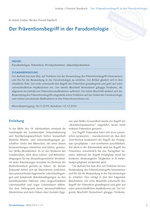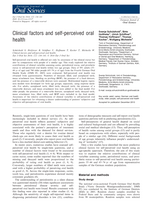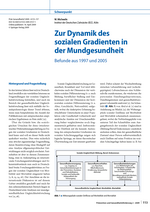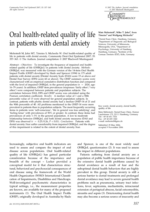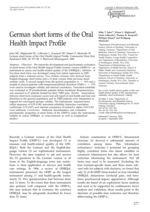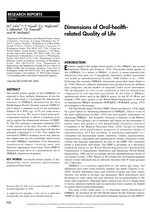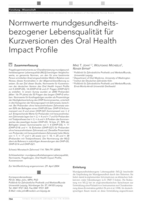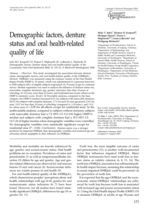
Medizinsoziologie und Gesundheitskompetenz
Autoren
John, Mike T.
LeResche, Linda
Koepsell, Thomas D.
Hujoel, Philippe
Miglioretti, Diana L.
Micheelis, Wolfgang
Schlagwörter
Oral health-relaled quality of life
Oral health
Behavioral sciences
Prevalence
Norms
Publikation — Zeitschriftenbeiträge
Titel
Oral health-related quality of life in Germany
Titel kurz
Eur J Oral Sci
Titel Ausgeschrieben
European Journal of Oral Sciences
ISSN
0909-8836 (Print); 0909-8836 (Linking)
Jahr
2003
Ausgabe
111
Issue
6
Seitenzahl
483-491
Erscheinungsdatum
01.12.2003
Oral health-related quality of life in Germany
The prevalence of impaired oral health-related quality of life (OHRQoL) in Germany is unknown. The aim was to determine the OHRQoL distribution in the population and to derive population-based norms. OHRQoL was measured using the German version of the Oral Health Impact Profile (OHIP-G, 53 items) which was administered in a personal interview to 2050 subjects (response proportion: 60%) 16-79 yr of age. Subjects were sampled using a multistage sampling technique in a national survey. Prevalence was calculated for any impairment on the item (OHIP answer categories ranging from 'hardly ever' to 'very often') and for frequent problems (categories 'fairly often' and 'very often'). Norms for the OHIP-G summary score (sum of all item responses in the English-language OHIP, range 0-196) were described by percentiles. Past-month prevalence of any impairment in OHRQoL ranged from 13% to 46% across all items. Frequent problems were rare (</= 6% for all items). Among subjects without dentures, 50% of the population had >/= 5 OHIP-G score points and 10% had >/= 38 points. For subjects with removable dentures the scores were 15 and 60 points, respectively, and for subjects with complete dentures, 23 and 85 points, respectively. The results provide the first overview of impaired OHRQoL in Germany.

